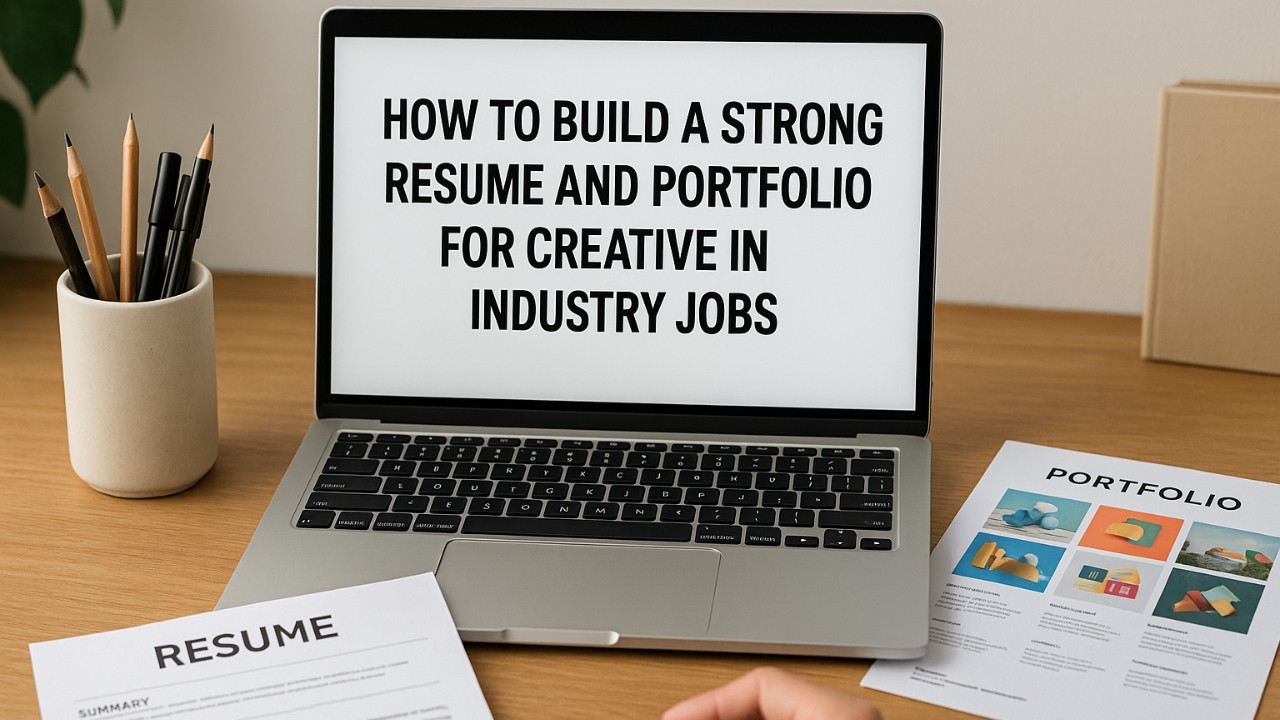The creative industry, which includes fields like graphic design, animation, filmmaking, fashion, and advertising, is one of the fastest-growing sectors globally. According to a 2024 report by UNESCO, the global creative economy is valued at over $2.25 trillion, employing nearly 50 million people worldwide. However, breaking into this competitive market demands more than just talent — it requires a compelling resume and a carefully curated portfolio.
While traditional resumes highlight degrees and job titles, creative industry recruiters prioritize evidence of skills, versatility, and originality. A well-crafted resume should capture the candidate’s ability to solve problems creatively, work collaboratively, and innovate within dynamic environments. Equally, a portfolio should not merely display past works but tell a consistent story about the individual’s creative journey, skills, and aspirations.
Given that studies reveal employers spend an average of just 7.4 seconds scanning a resume (Ladders, Inc., 2024), and 80% of creative industry hires happen based on the strength of a portfolio (Behance, 2023), the importance of both documents is critical. Building a standout profile is no longer optional—it is a strategic necessity.
Understanding the Key Differences: Resume vs Portfolio

Before diving into strategies, it’s crucial to differentiate between a creative resume and a portfolio:
| Aspect | Resume | Portfolio |
|---|---|---|
| Purpose | Summarizes experience and skills | Demonstrates actual work and creativity |
| Format | Typically 1–2 pages | Visual collection (digital or physical) |
| Evaluation | Quick background check | In-depth skill and style assessment |
| Content Focus | Job titles, achievements, education | Projects, case studies, personal style |
Both elements are complementary. A strong resume draws interest, but a powerful portfolio seals the opportunity.
Essential Elements of a Creative Resume
A creative resume must go beyond plain text. However, it should not compromise clarity for aesthetics. Key elements to include are:
Contact Information
- Full name, professional email, phone number, LinkedIn, personal website/portfolio link.
Professional Summary
- A short, impactful paragraph (2–3 lines) highlighting expertise, industry focus, and career goals.
Skills Section
- Separate into “Technical Skills” and “Creative Skills” for better readability.
- Prioritize software proficiency (e.g., Adobe Suite, Figma) and artistic techniques (e.g., Storyboarding, Typography).
Professional Experience
- List in reverse chronological order.
- Focus on achievements rather than responsibilities.
- Use metrics: “Increased client engagement by 30% through campaign redesign.”
Education
- Include relevant degrees, diplomas, certifications.
Awards and Recognition
- Mention competitions, exhibitions, publications, and features.
Visual Touch
- Maintain consistency in typography, layout, and use of subtle design elements.
- Avoid overwhelming colors unless applying for highly artistic roles (e.g., Illustration).
Pro Tip: Keep the resume ATS (Applicant Tracking System) friendly, especially for larger companies.
How to Structure a Winning Portfolio
Unlike a resume, a portfolio is not restricted by length. However, quality always outweighs quantity. Aim for 6 to 12 curated projects that best demonstrate your range and depth.
Components of an Ideal Creative Portfolio:
| Component | Details |
|---|---|
| Cover Page | Name, profession, and personal branding element |
| Introduction/Overview | Brief bio explaining creative philosophy |
| Selected Projects | Visuals + detailed case studies |
| Project Details | Goals, process, challenges faced, outcomes |
| Testimonials | Client or mentor feedback if available |
| Contact Information | Professional email and portfolio site link |
Presentation Tips:
- Start with the strongest project to create a powerful first impression.
- Use storytelling: Present the problem, your approach, and the final solution.
- Add personal projects to show passion and self-driven creativity.
- Optimize for mobile viewing as 65% of recruiters browse portfolios on handheld devices.
Common Mistakes to Avoid
Even talented individuals falter by making preventable mistakes. Here are the major pitfalls:
- Overloading the resume with irrelevant job history.
- Neglecting proofreading, leading to typos that damage professionalism.
- Cluttered layout in portfolios that distracts from work quality.
- Including every single project — not filtering weak or outdated work.
- Forgetting Call-to-Action (e.g., “Contact me for collaborations”).
Avoiding these errors can significantly improve first impressions and interview calls.
Smart Strategies to Enhance Resume and Portfolio
Custom Tailor for Each Application
- Adapt the resume and highlight relevant portfolio pieces based on the job description.
Use Action Verbs
- Begin resume bullet points with action verbs like Designed, Developed, Conceptualized, Revamped, and Directed.
Personal Branding
- Develop a personal logo, color scheme, and tone that reflect your creative identity consistently across the resume, portfolio, and website.
Continuous Updating
- Update your documents every 6 months with new work, skills acquired, and professional achievements.
Leverage Online Platforms
- Create profiles on Behance, Dribbble, Vimeo (for video editors), and Adobe Portfolio to reach a wider audience.
- 80% of creative professionals get discovered through online platforms.
Quick Checklist for Final Review
Before submission, ensure the following:
- ✅ Resume fits on one page (unless 10+ years of experience).
- ✅ All hyperlinks in the digital resume and portfolio are working.
- ✅ Grammar and spelling have been triple-checked.
- ✅ Portfolio projects are accompanied by short, clear descriptions.
- ✅ Design elements are visually appealing but non-distracting.
- ✅ A PDF version of both resume and portfolio is available for easy sharing.
In the creative industry, your resume and portfolio are your first audition. They represent your technical abilities, aesthetic judgment, attention to detail, and problem-solving mindset. By strategically crafting these tools with a blend of strong design, compelling storytelling, and targeted content, you dramatically increase your chances of standing out in a saturated talent pool.
Remember, creative employers do not just hire skills; they hire perspectives. Ensure that your documents not only demonstrate what you can do but also who you are as a creative professional.